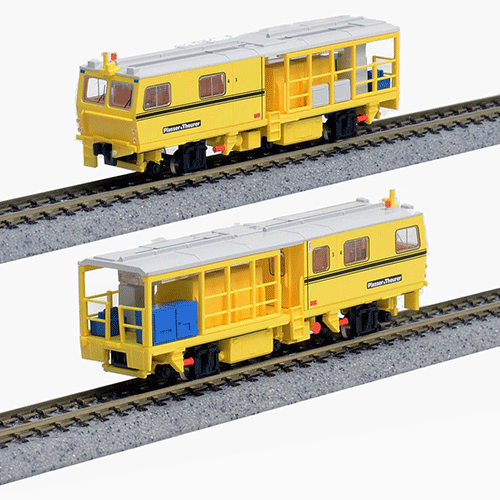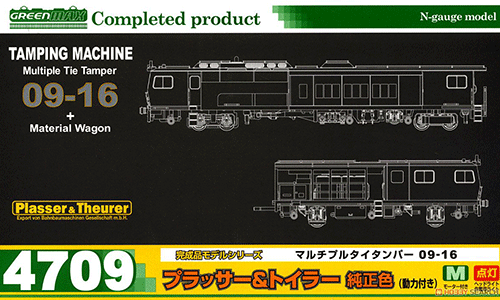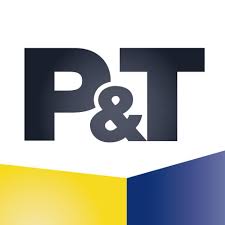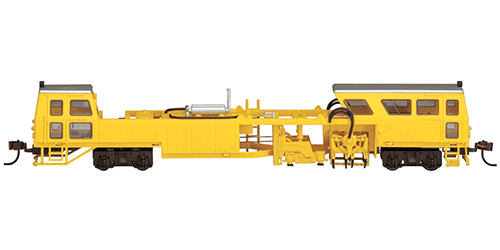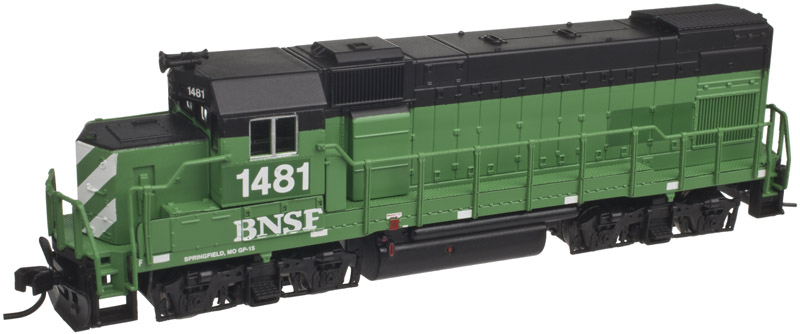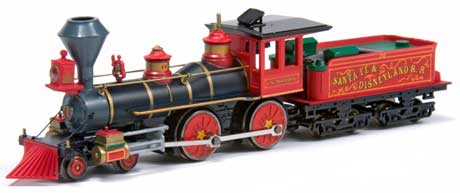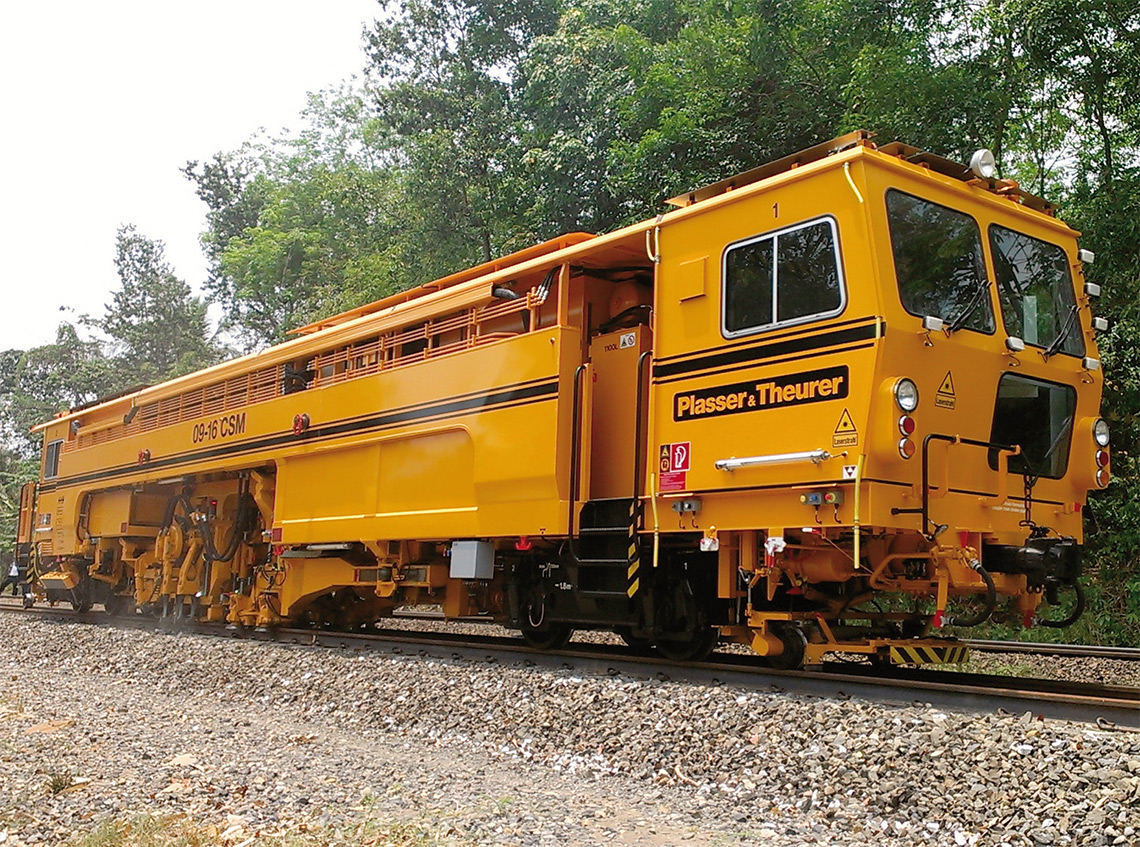Model Information: Motorized, with low speed gearing, and non-operating ballast tamper mechanisms, these factory assembled and decorated models are fitted with operating headlights, safety beacons, and interior lighting. The trailer cars are connected via a swinging drawbar.
Prototype History: The Plasser Continuous Action Tamper 09-16 C.A.T. is a heavy duty, high speed, continuous action production track tamping machine. All track working units are mounted on a separate, self-propelled, satellite frame that is mounted within the 09-16 C.A.T.'s main frame. The 09-16 C.A.T. is standard equipped with fully automatic, computer controlled (AGGS) lifting, leveling and lining systems.
Plasser Continuous Action Tampers have been working successfully on major world railway systems since 1983, providing optimum "return on investment" of track maintenance expenditures.
Plasser Continuous Action Tampers have been working successfully on major world railway systems since 1983, providing optimum "return on investment" of track maintenance expenditures.
Brand/Importer Information: Green Max may be little known, but they offer a large range of kits and a few 'ready-to-run' of Japanese railway models and more important a large range of accessories of typical Japanese design, all in Japanese N-scale (1:150)
Green Max kits are usually simple to build, but painting and finishing requires careful attention, the catalogue includes a full manual for assembly, painting and finishing, albeit only in Japanese, the many photographs make it clearly understandable. Most kits can be build in several varieties, the multiple-unit train models in particular, so you have the choice of several prototypes. This is why the bogies and pantographs (and the eventual power unit) are NOT included in the kits, they vary with the choice of prototype and would otherwise make the kits more expensive.
The Green Max rolling stock range is extensive and stands clearly out from the ranges by Kato and Tomix. Green Max makes mainly models of the 1950's and 1960's, many of an even earlier age and Green Max has a large range of trains used by the many private railways of Japan. As mentioned above it is often possible to choose from more than one model when assembling the kit. It is best to decide before you buy the kit, the catalogue gives you the information needed, only then you can order the right bogies and pantographs. Different front-ends and possibly sides are included in the kit.
Green Max kits are usually simple to build, but painting and finishing requires careful attention, the catalogue includes a full manual for assembly, painting and finishing, albeit only in Japanese, the many photographs make it clearly understandable. Most kits can be build in several varieties, the multiple-unit train models in particular, so you have the choice of several prototypes. This is why the bogies and pantographs (and the eventual power unit) are NOT included in the kits, they vary with the choice of prototype and would otherwise make the kits more expensive.
The Green Max rolling stock range is extensive and stands clearly out from the ranges by Kato and Tomix. Green Max makes mainly models of the 1950's and 1960's, many of an even earlier age and Green Max has a large range of trains used by the many private railways of Japan. As mentioned above it is often possible to choose from more than one model when assembling the kit. It is best to decide before you buy the kit, the catalogue gives you the information needed, only then you can order the right bogies and pantographs. Different front-ends and possibly sides are included in the kit.
Item created by: nscalemodeler160 on 2016-07-23 20:47:00. Last edited by gdm on 2018-05-25 09:20:49
If you see errors or missing data in this entry, please feel free to log in and edit it. Anyone with a Gmail account can log in instantly.
If you see errors or missing data in this entry, please feel free to log in and edit it. Anyone with a Gmail account can log in instantly.


